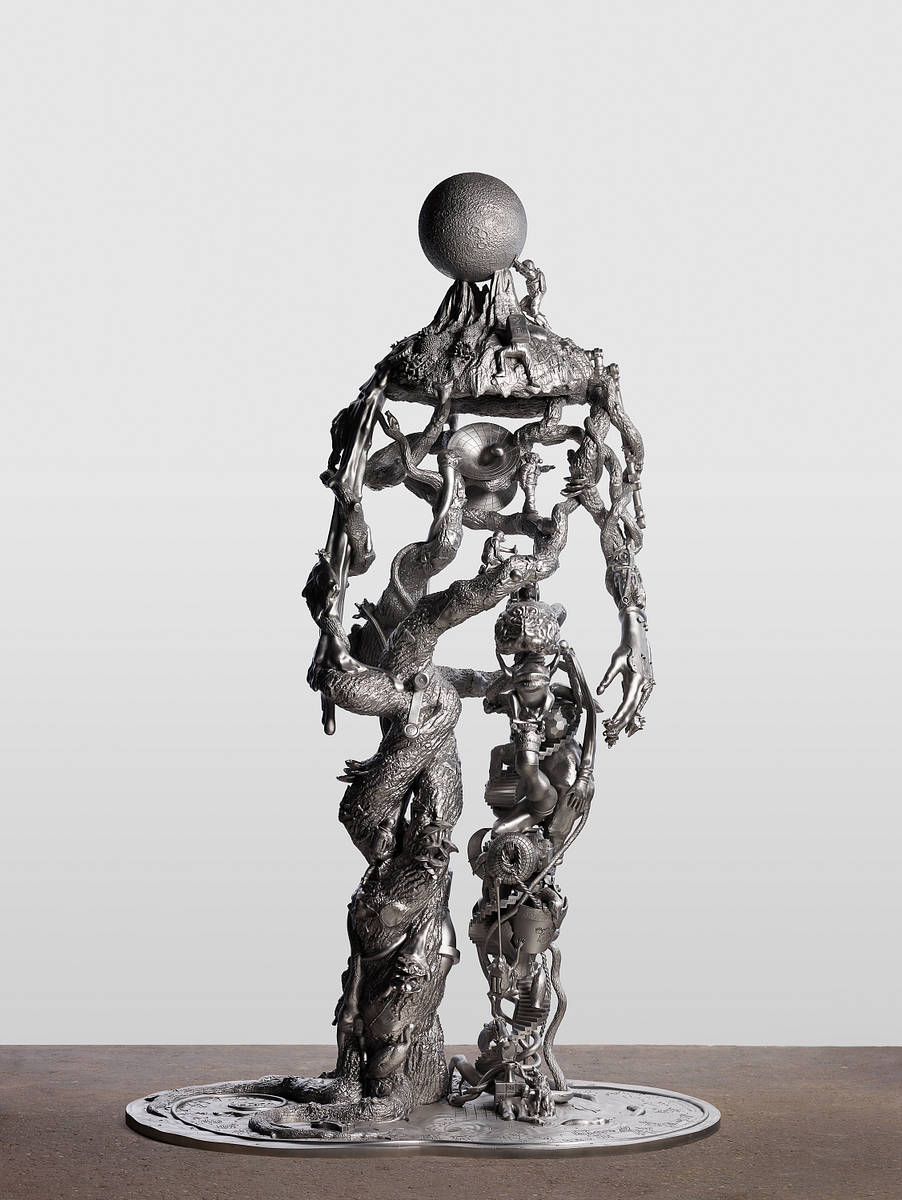
Cast stainless steel
120 x 70 x 50 inches
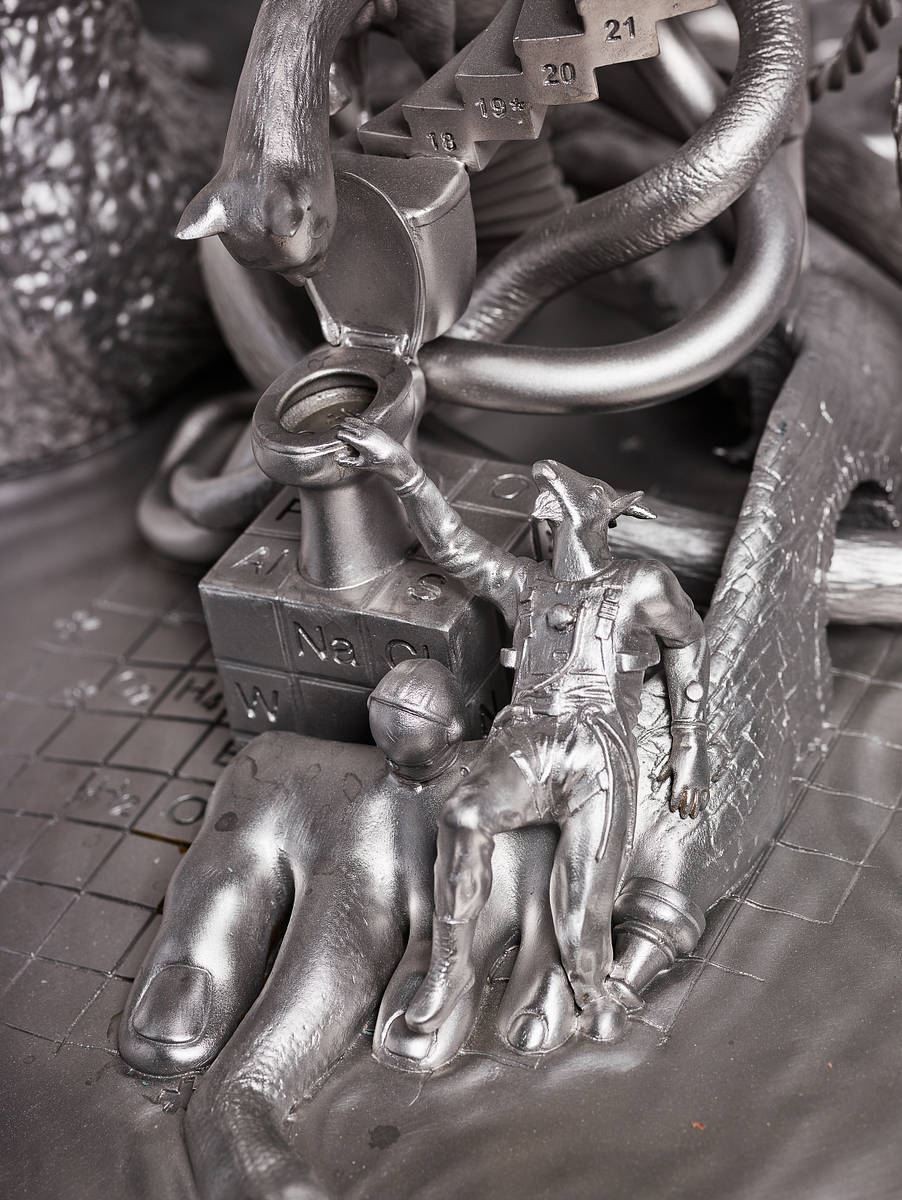
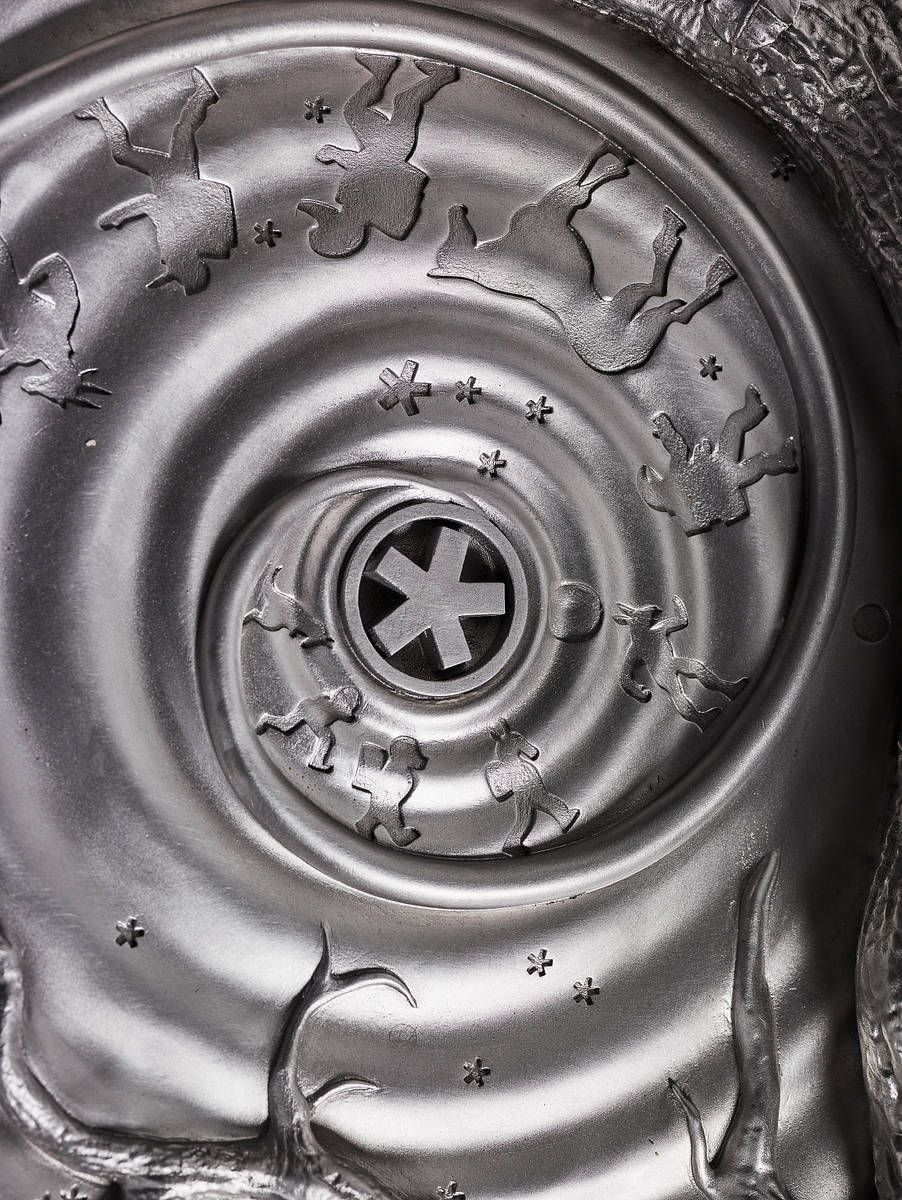
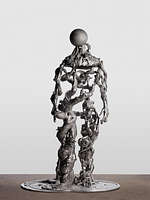
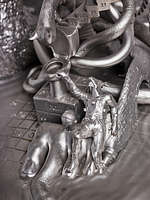
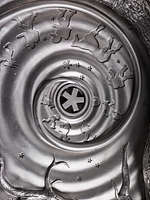
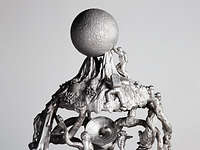

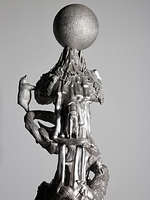
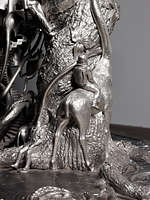
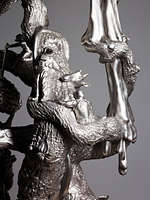
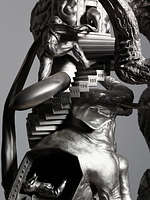
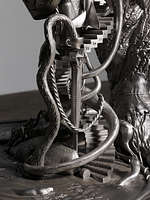
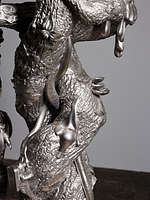
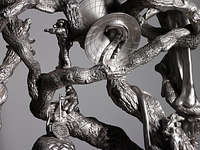
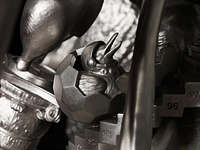
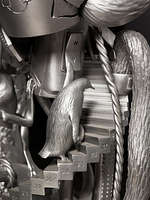
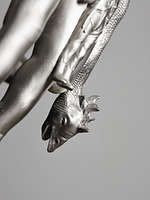
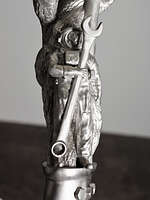
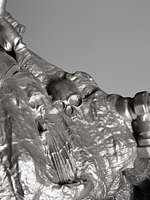
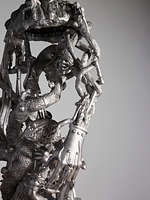
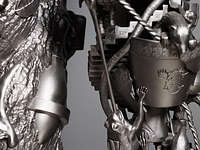
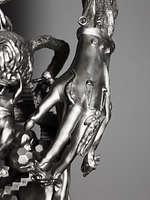
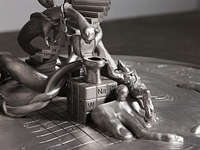
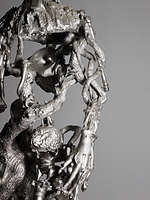
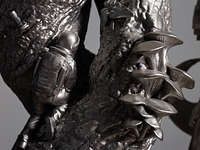
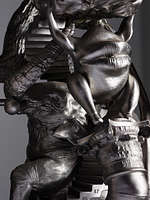
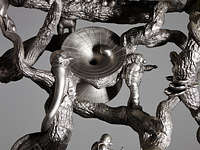
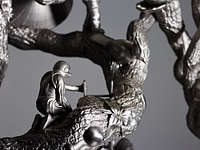
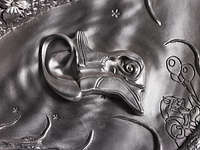
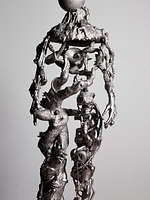
 in Toronto, Ontario](https://d3rdjxriz8paq3.cloudfront.net/media/mediaitem/2833/attachment/small-146a712d57ba17c25712312748eae2f0.jpeg)
EMERGENCE is Dustin Yellin’s new stainless steel sculpture that braids together three threads – the origin of the universe, the story of the birth of life, and the creation of computing – into a 10 foot tall human-like being. Building off the artist’s well known Psychogeographies series, in which hundreds of smaller images combine to make a singular bodily form, EMERGENCE introduces a figure modeled from the World Tree, a mythological archetype found across multiple cultures that connects the Earth to the stars, denoting the central axis on which the cosmos turns.
Mirroring various evolutionary hypotheses, EMERGENCE grows out of a base plate in the shape of two overlapping discs that depict a primordial prebiotic soup from which all life on Earth developed. Following the idea that astrobiology probably played a role in these processes, the plate is also cast with a star map depicting the sky in Toronto on May 29, 1919, the date astronomers used a solar eclipse to test and prove Albert Einstein’s general theory of relativity. The plate also echoes The Golden Record, an album of sounds and images which Carl Sagan sent to space on the Voyager Satellites (1977) as a “cosmic message in a bottle” to be found by possible extraterrestrials.
Instead of casting a letter into the universe, EMERGENCE presents a series of symbols to be decoded by the public like a puzzle. These details add up to tell various stories of how small things come together to form more complex systems, and also entice the audience to decipher the rest of the artwork. Looking down on the baseplate you can see several forms playing off each other: an ammonite fossil, and with it, the golden spiral, are mirrored by a human ear, which like the fossil, coils together through its spiral-shaped cochlea. A parade of lifeforms emerge from the center of the 1919 solar eclipse depicted on the base plate, including a parade of novel constellations designed by Yellin so as to tease the imagination by constructing new mythologies.
As the figure emerges from the plate it cobbles together items, which likewise embed into and shape the figure. A foot is formed by a Rubik’s Cube that symbolically mixes up the periodic table to form new molecules from which a staircase, resembling a DNA helix, sprouts. The other leg, which takes the form of a tree trunk, hosts maple leaves, trillium flowers, and a loon, each a feature of the wilds of Ontario. Playing technology off classical architecture and surrealism, an orca swirls out of a Berninian helical column. Nearby, an alligator-headed astronaut approaches a giant camera labeled “EYE”; an arm extruding from the camera lens supports an event horizon in the form of a bagel. Matching the flat effigies found in the mythical constellations on the base plate, a team of 3D hybrid animal/people astronauts explore the entire scene from top to bottom. This play, between 2D (traditionally painting) and 3D (sculpture), was a key device artists used during the Baroque period to trick the eye so as to make art that appears to be alive and in motion. Redoubling the idea of cosmology, several event horizons, or possible ‘worm holes’ chew through the bark. The baseplate, which can be thought of as a kind of legend, is mirrored again through a domed planetarium-like space capsule in the hollow of the figure’s chest and shoulders. As the crowning touch, an Atlas-like astronaut balances a moon on a volcano, which doubles as the figure’s head and neck.
Permanent installation a The Well in Toronto, Ontario
486 Front St W, Toronto, ON M5V 0V2, Canada
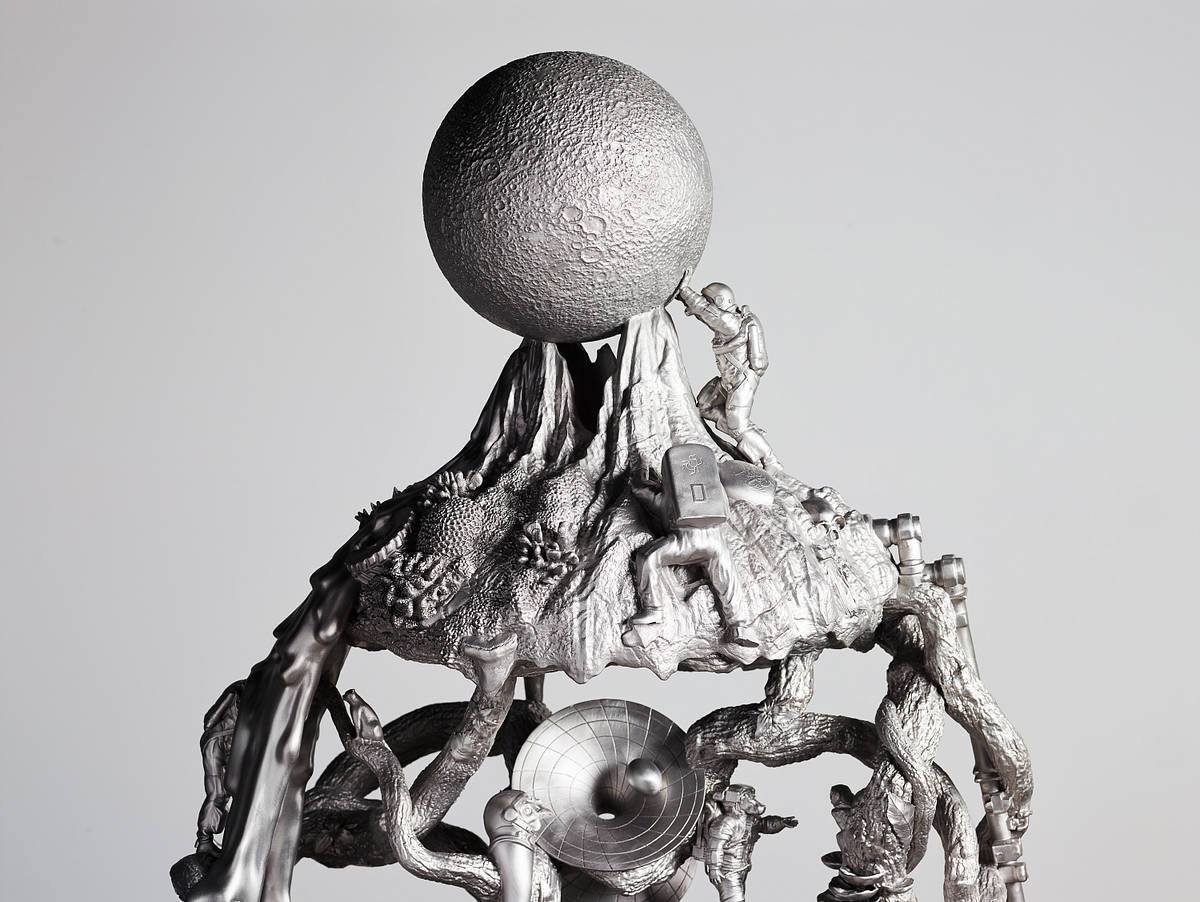
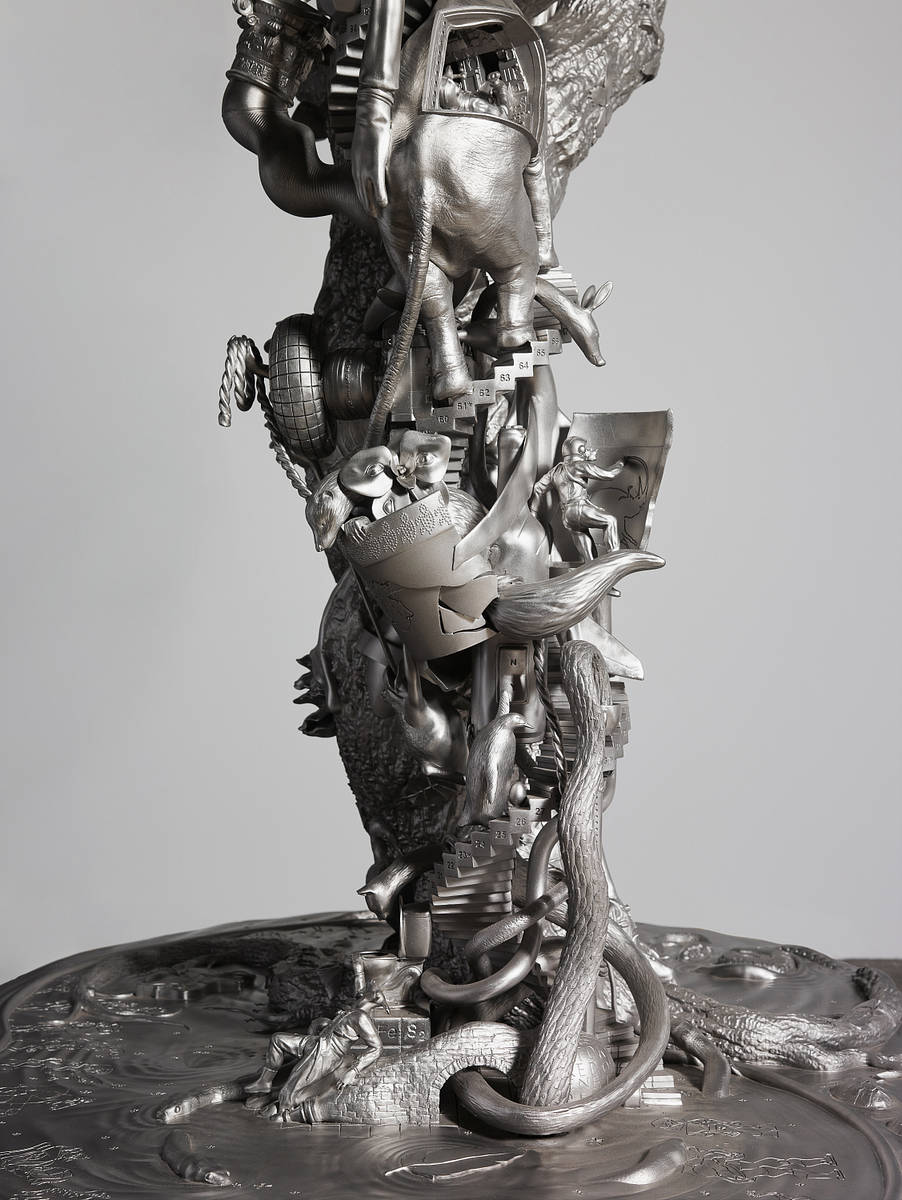
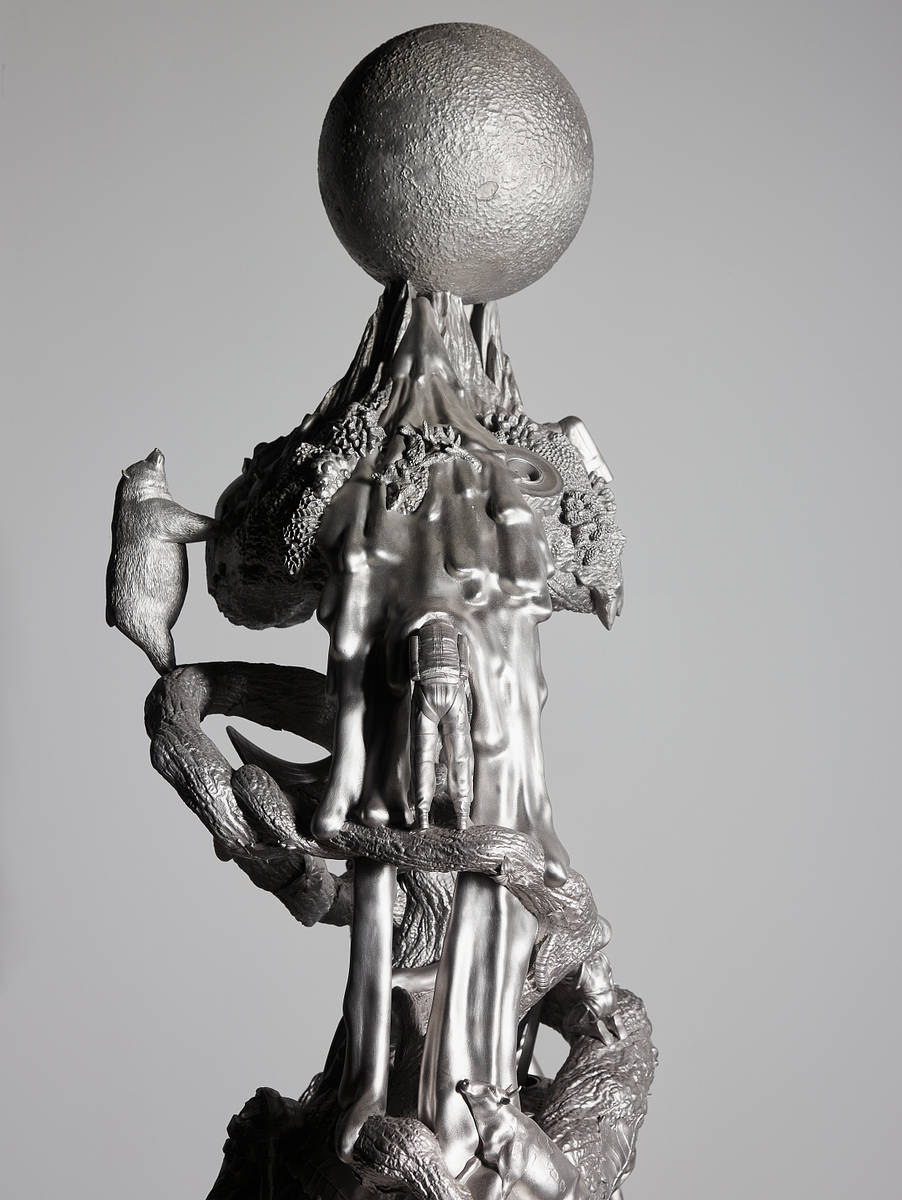
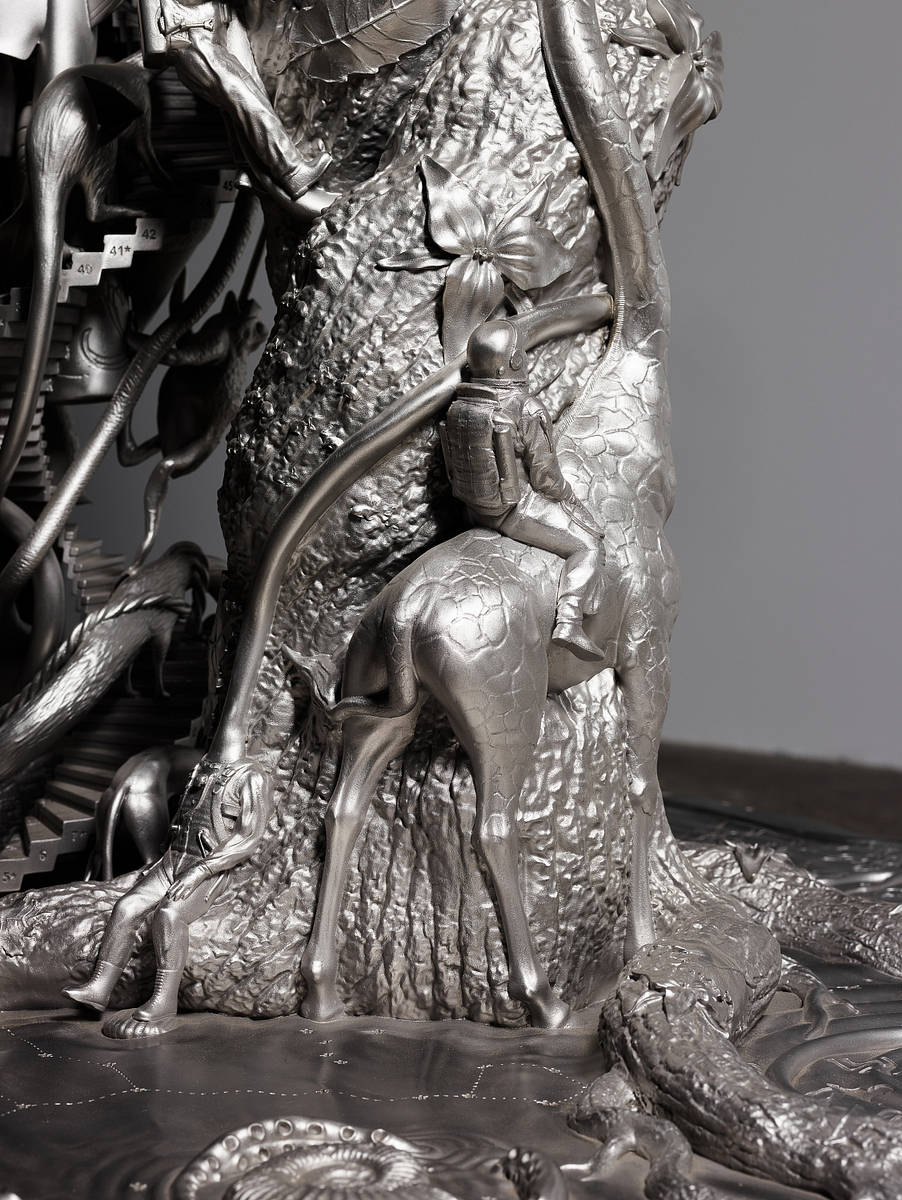
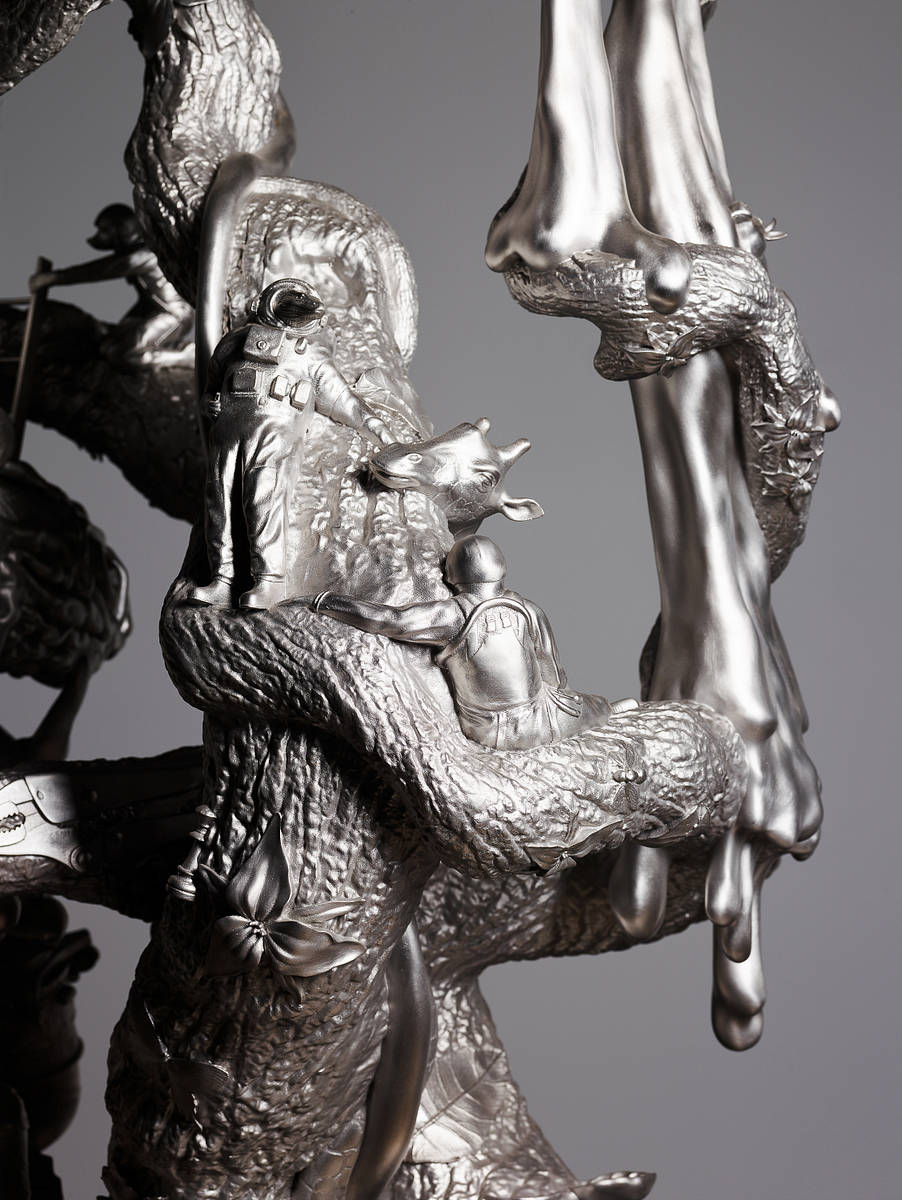
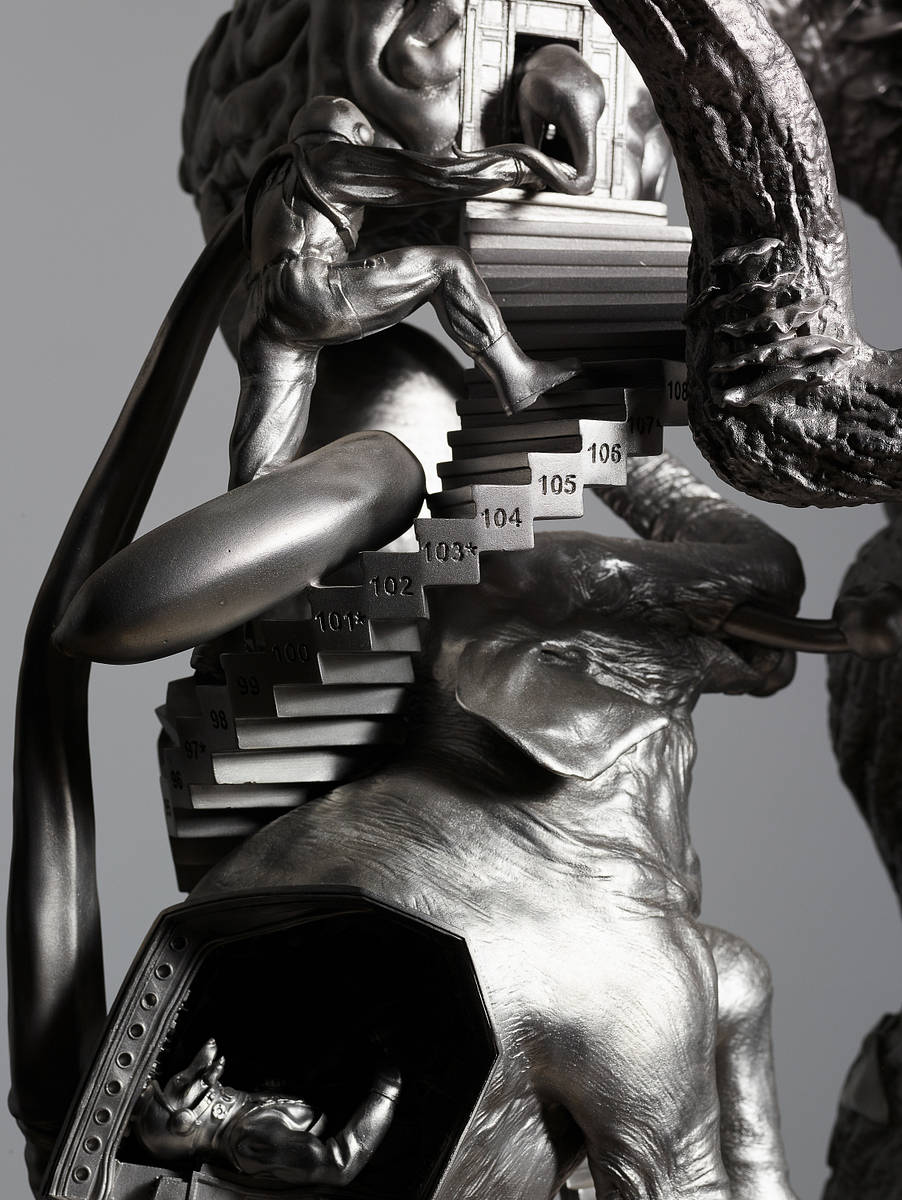
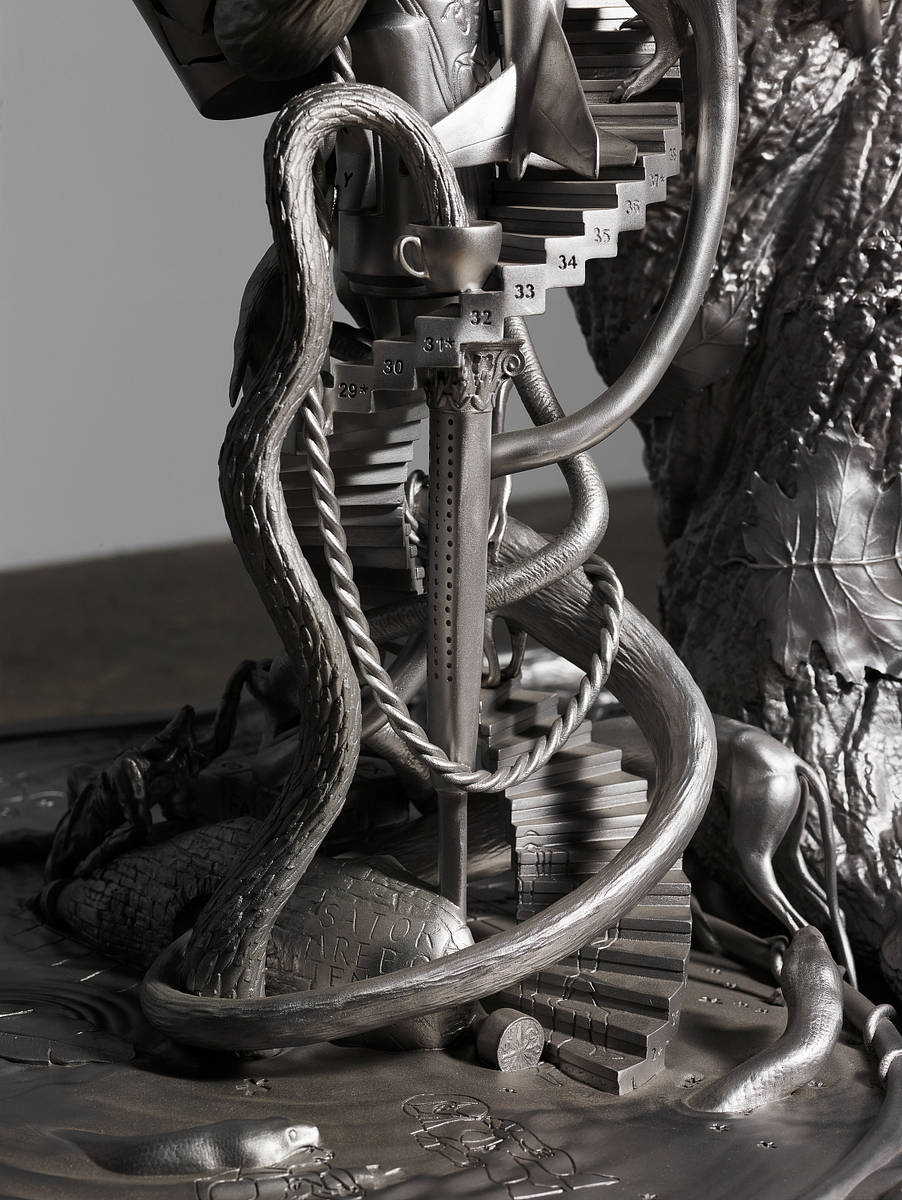
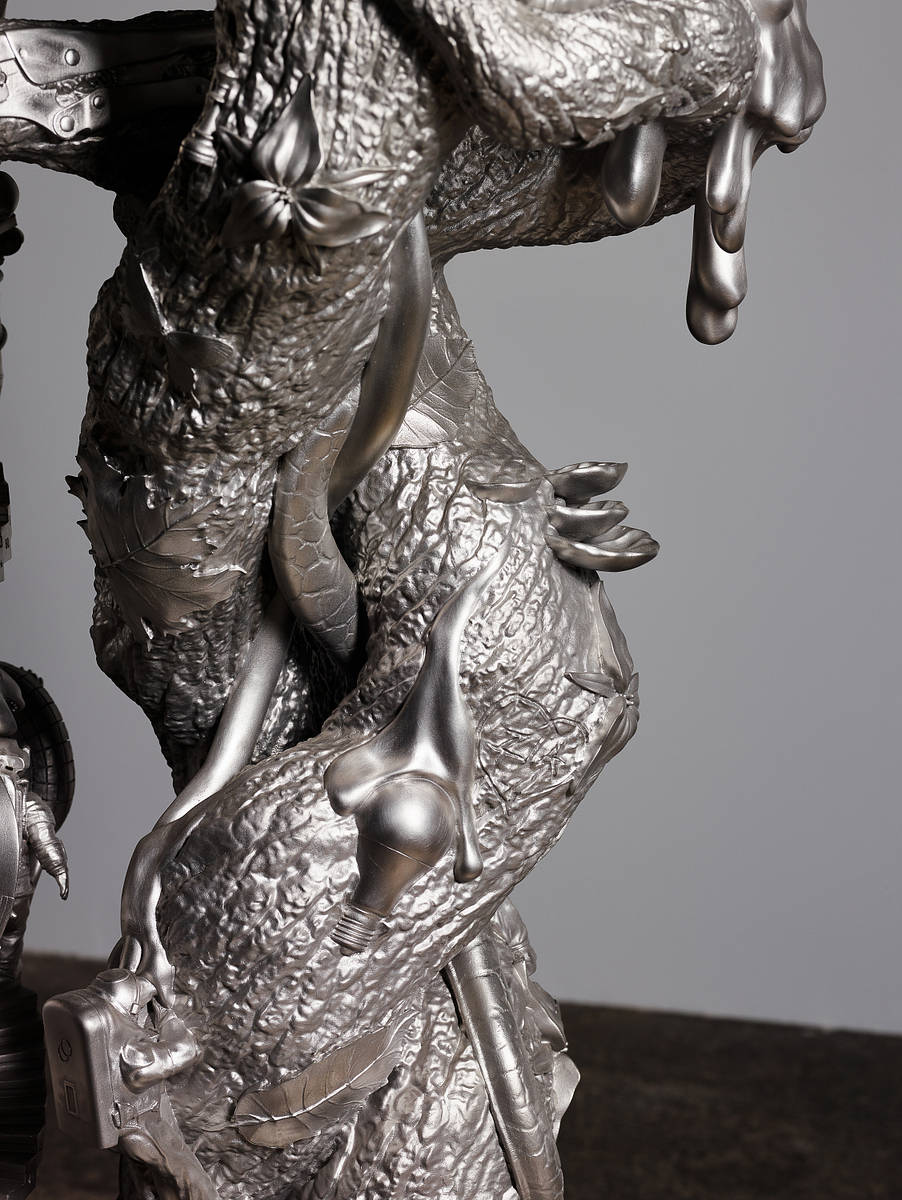
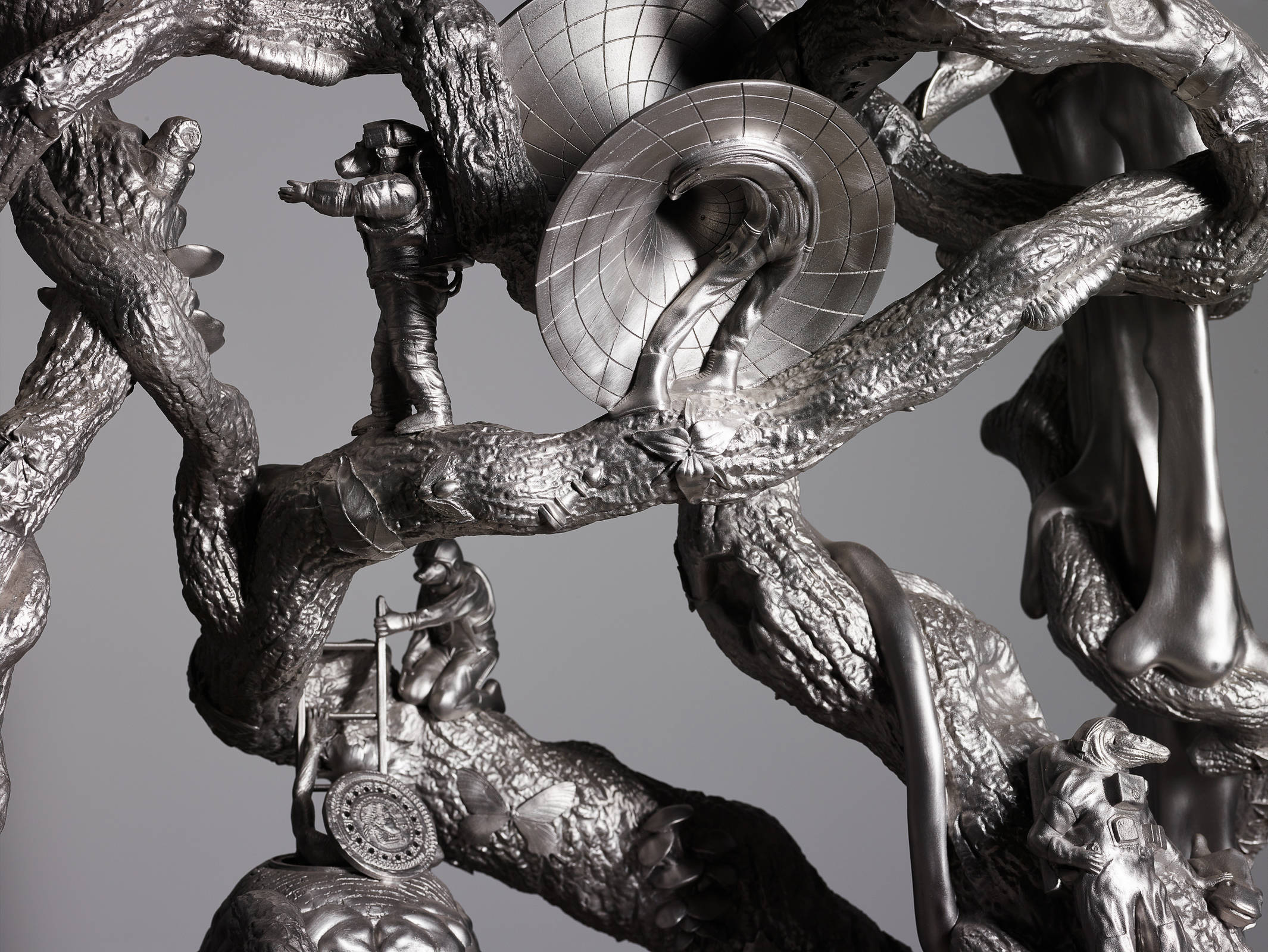
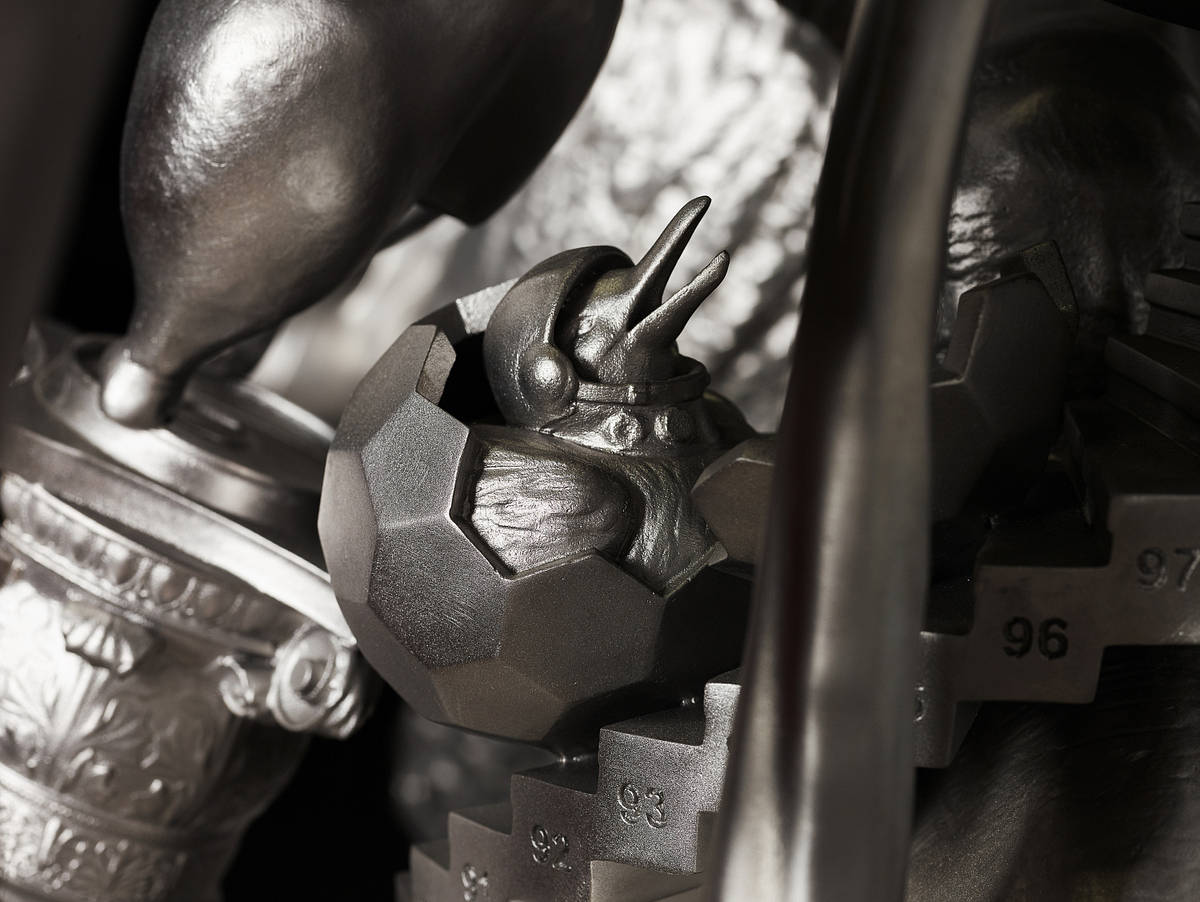
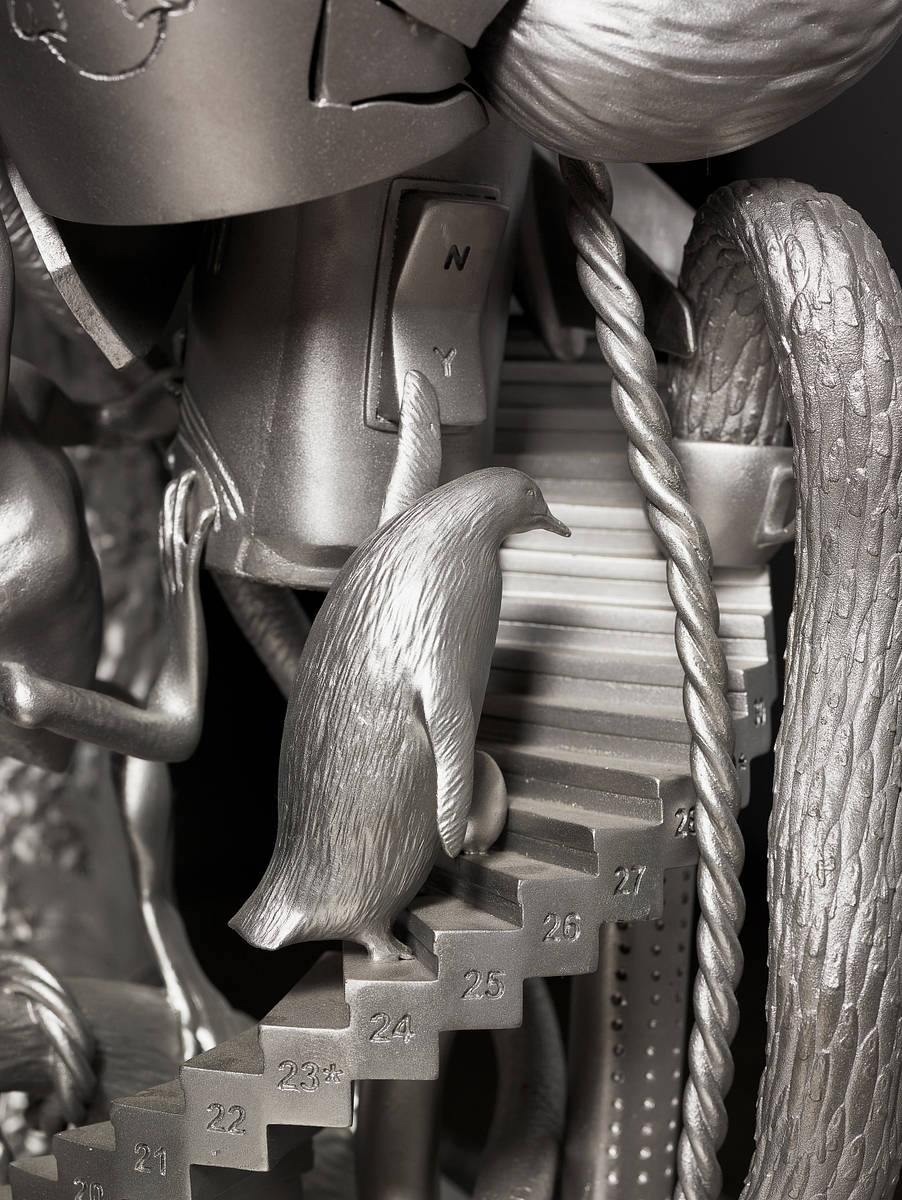
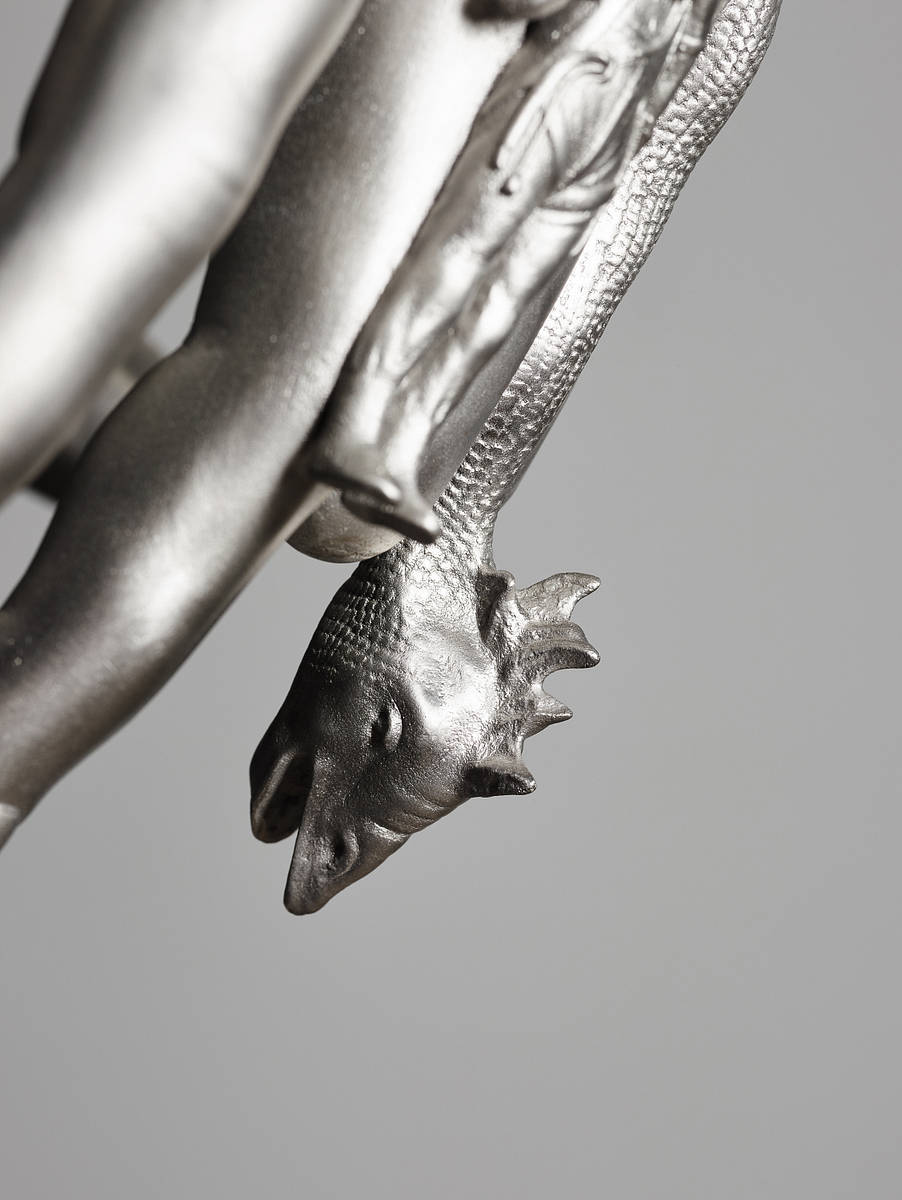
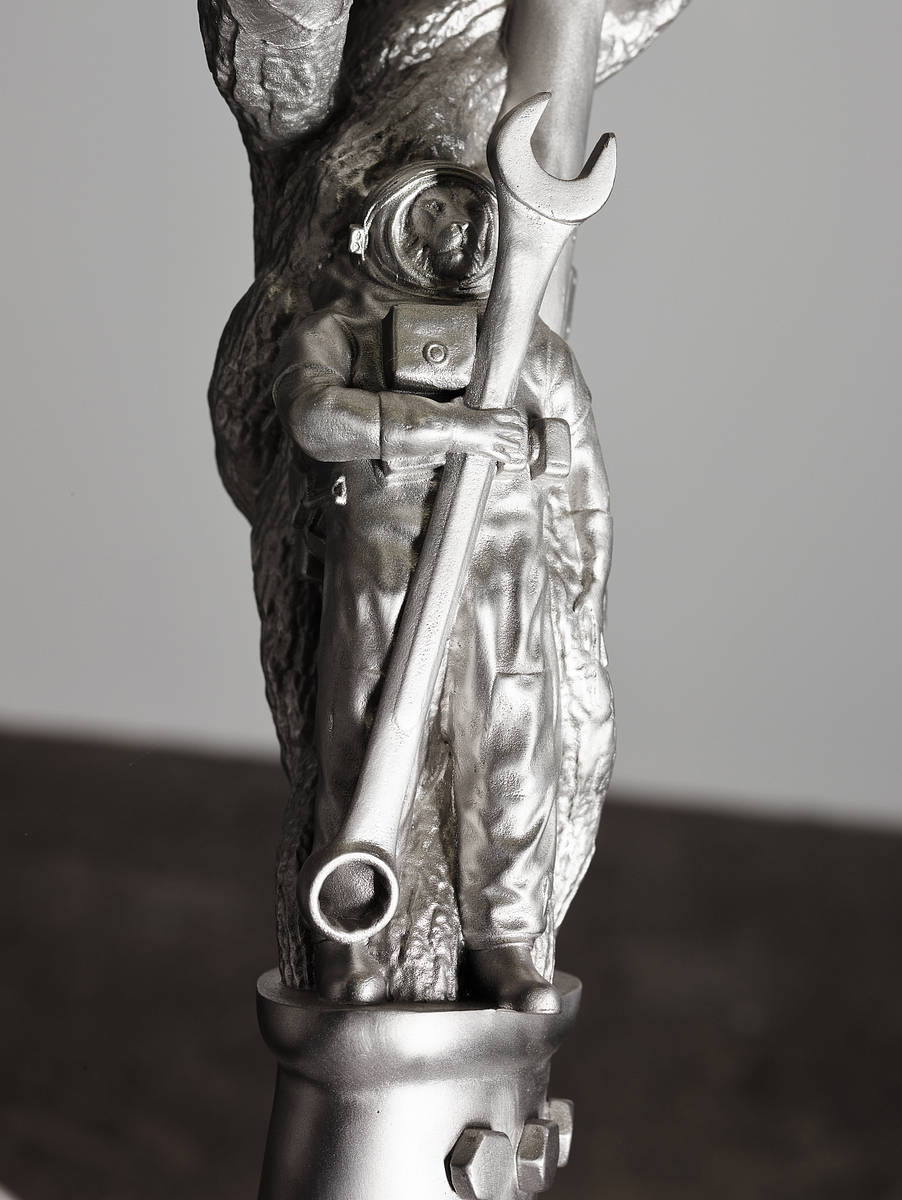
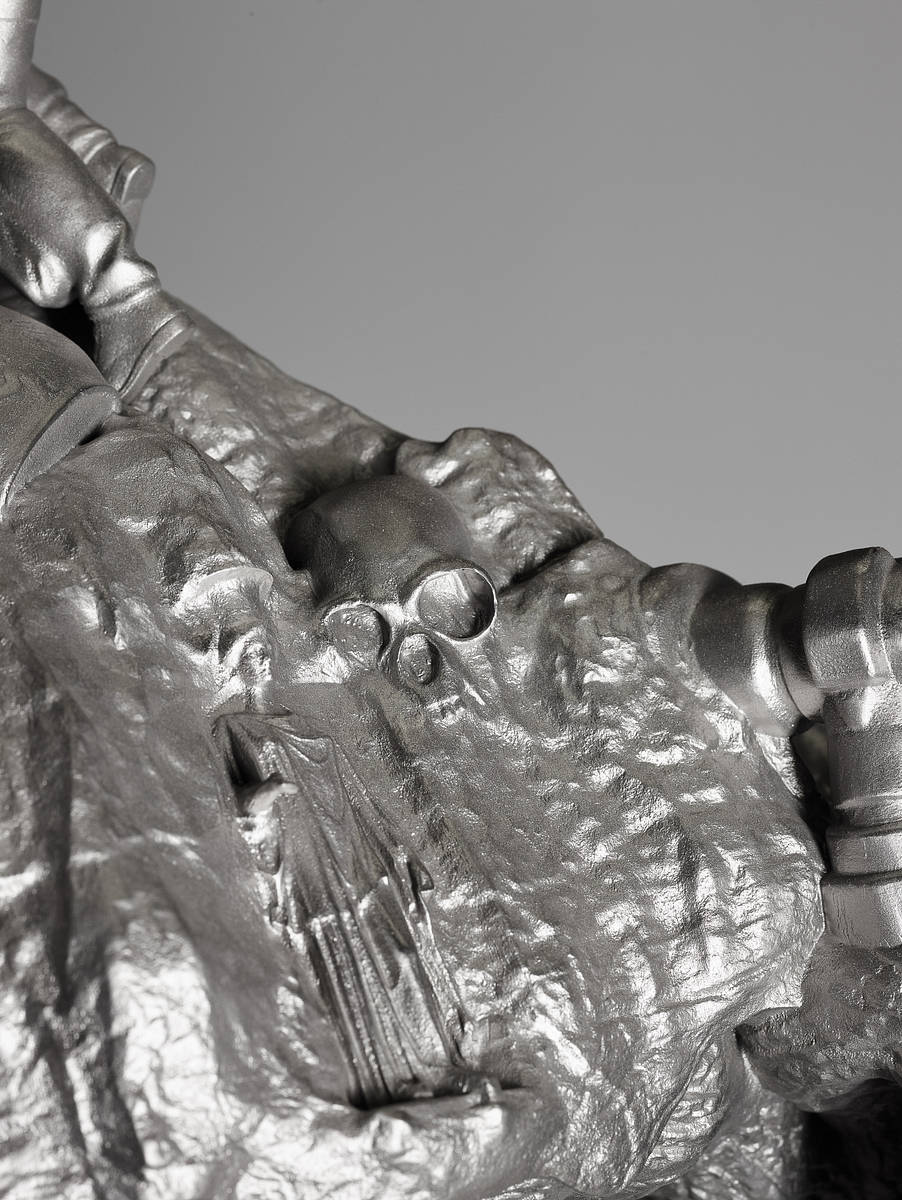
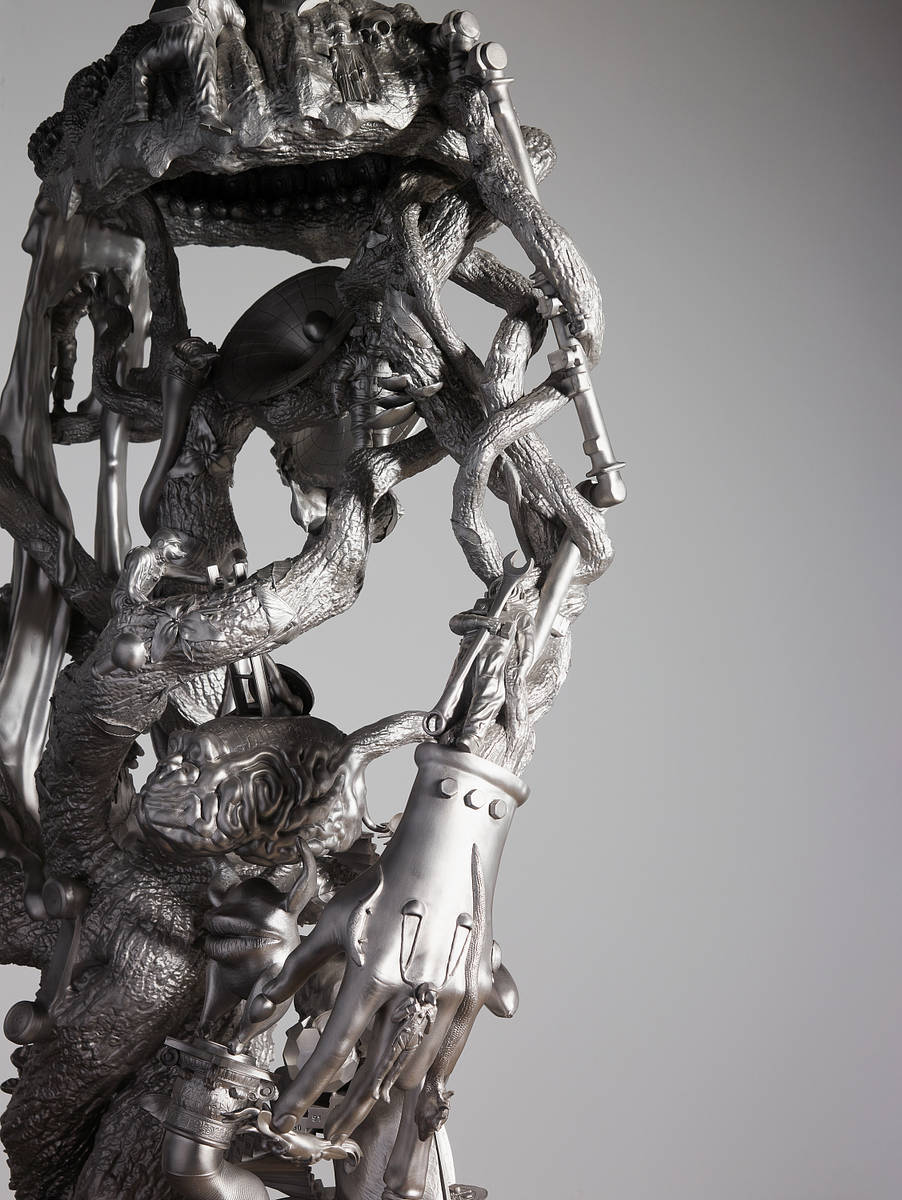
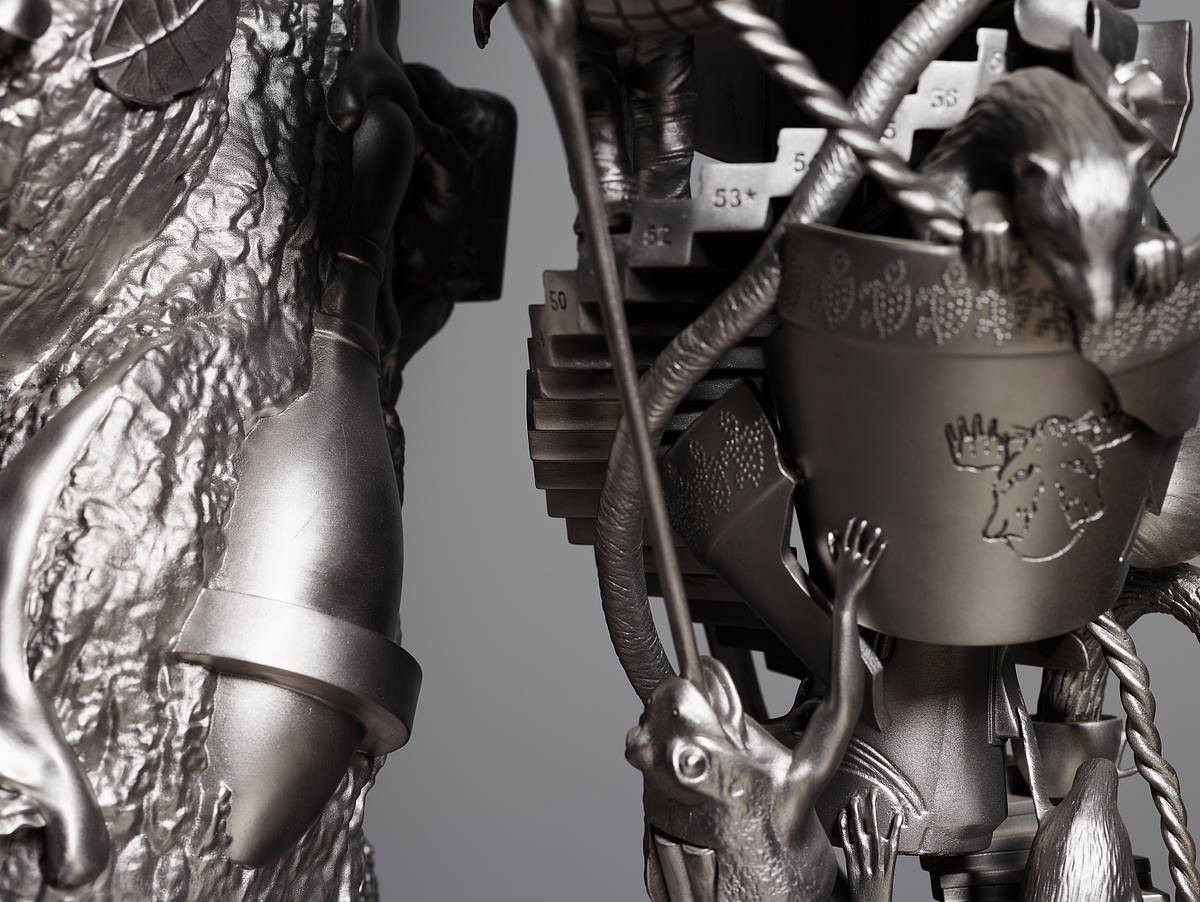
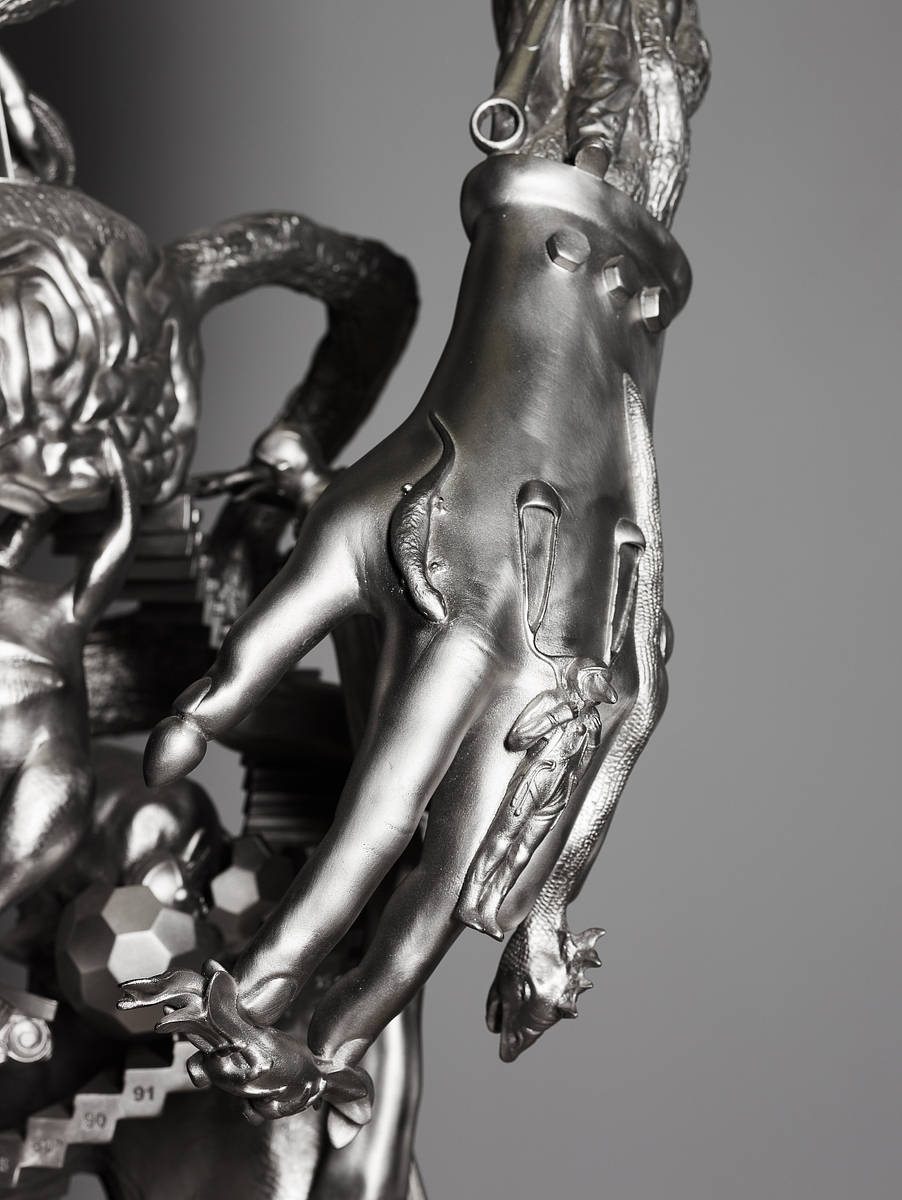
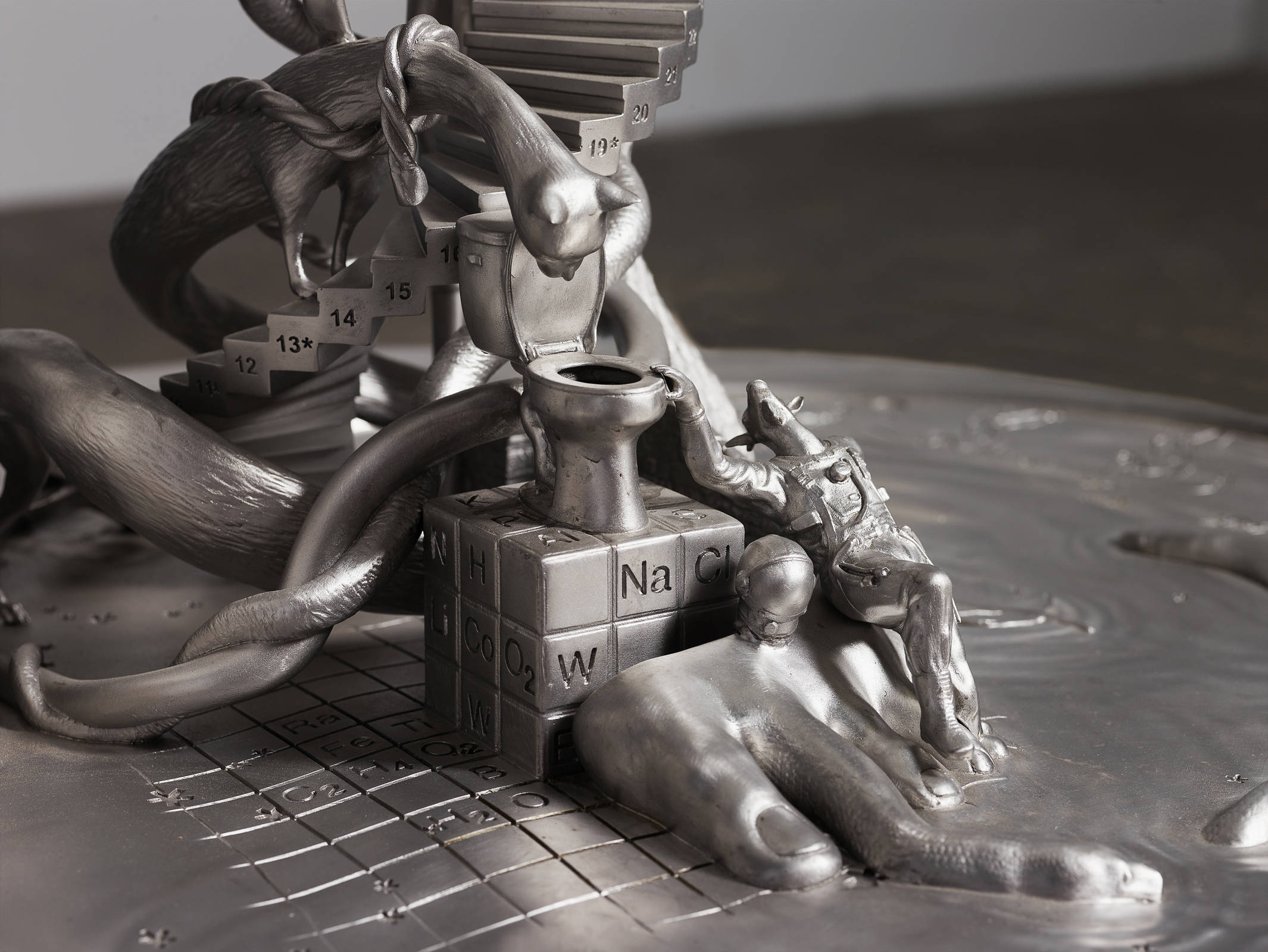
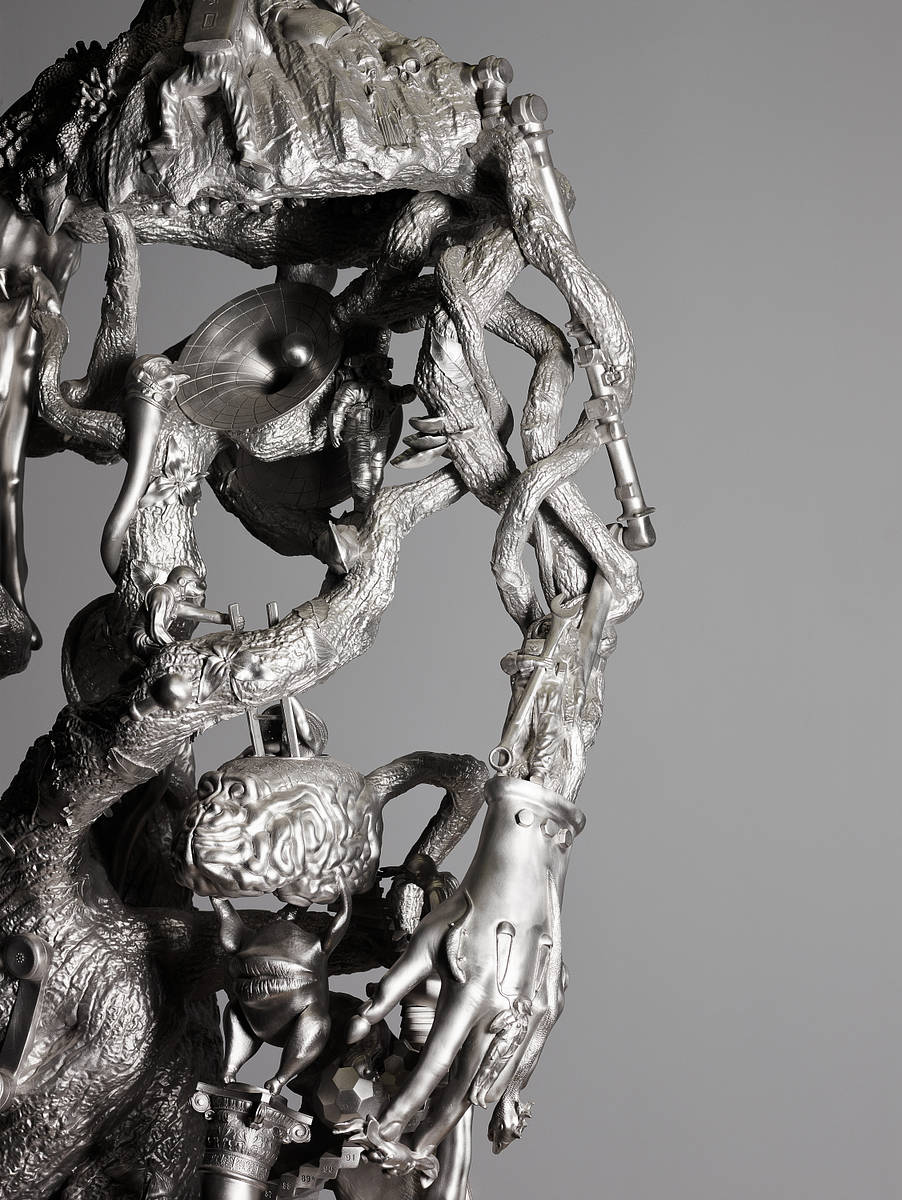
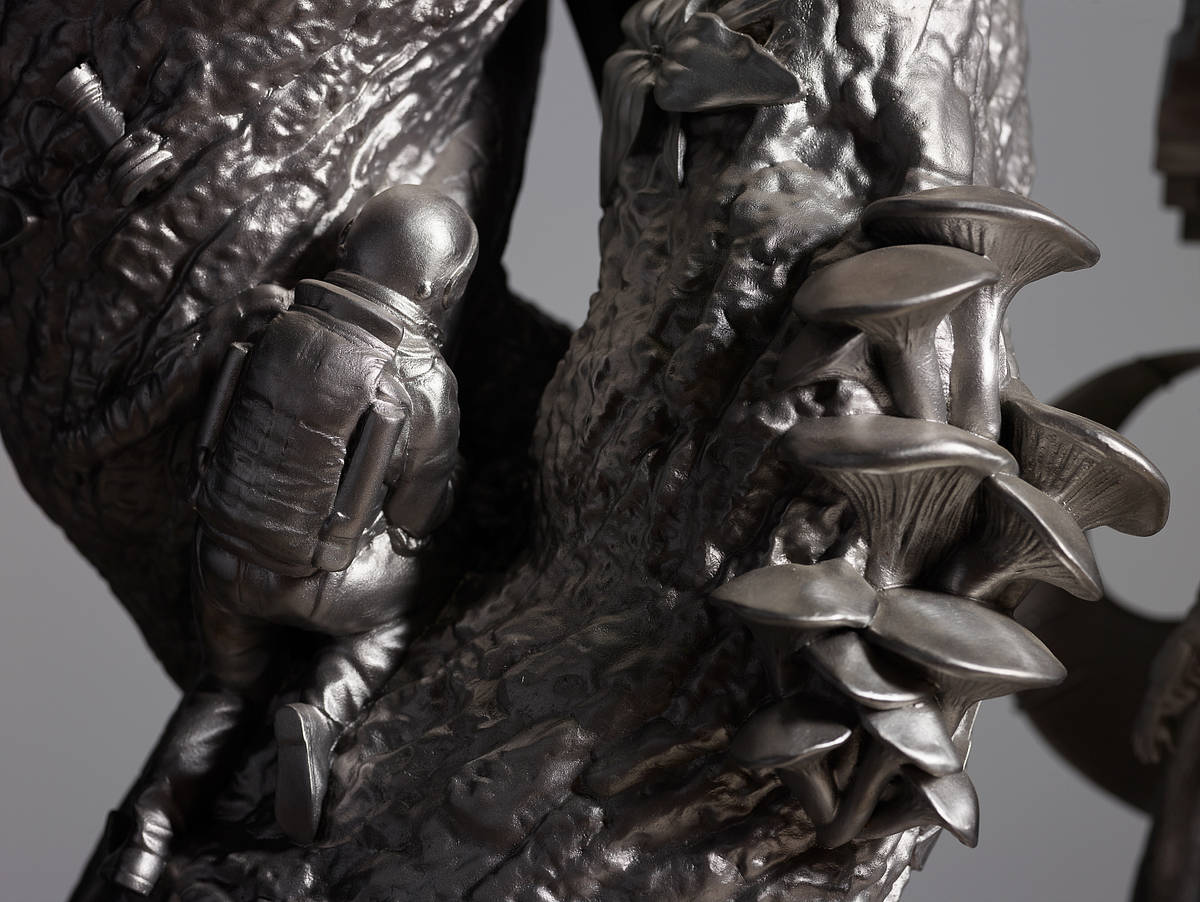
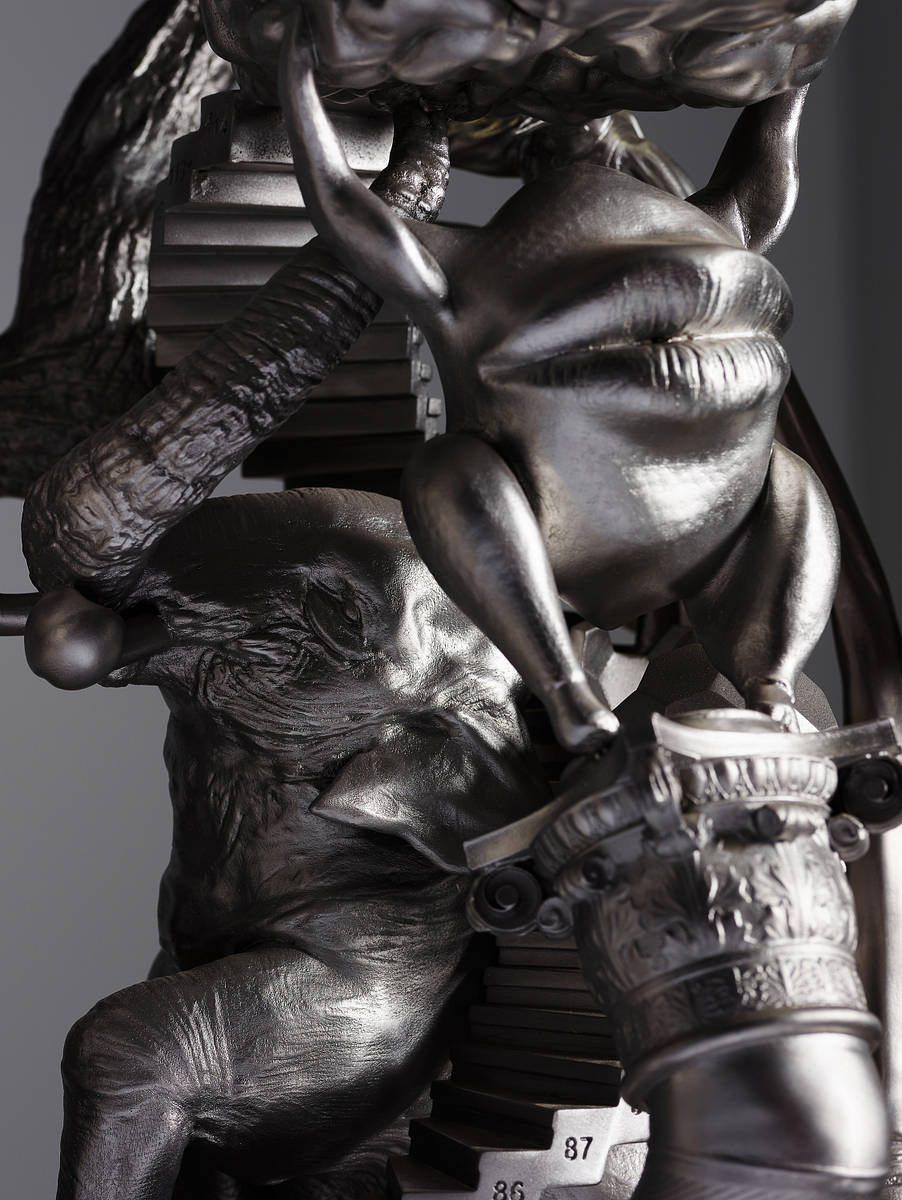
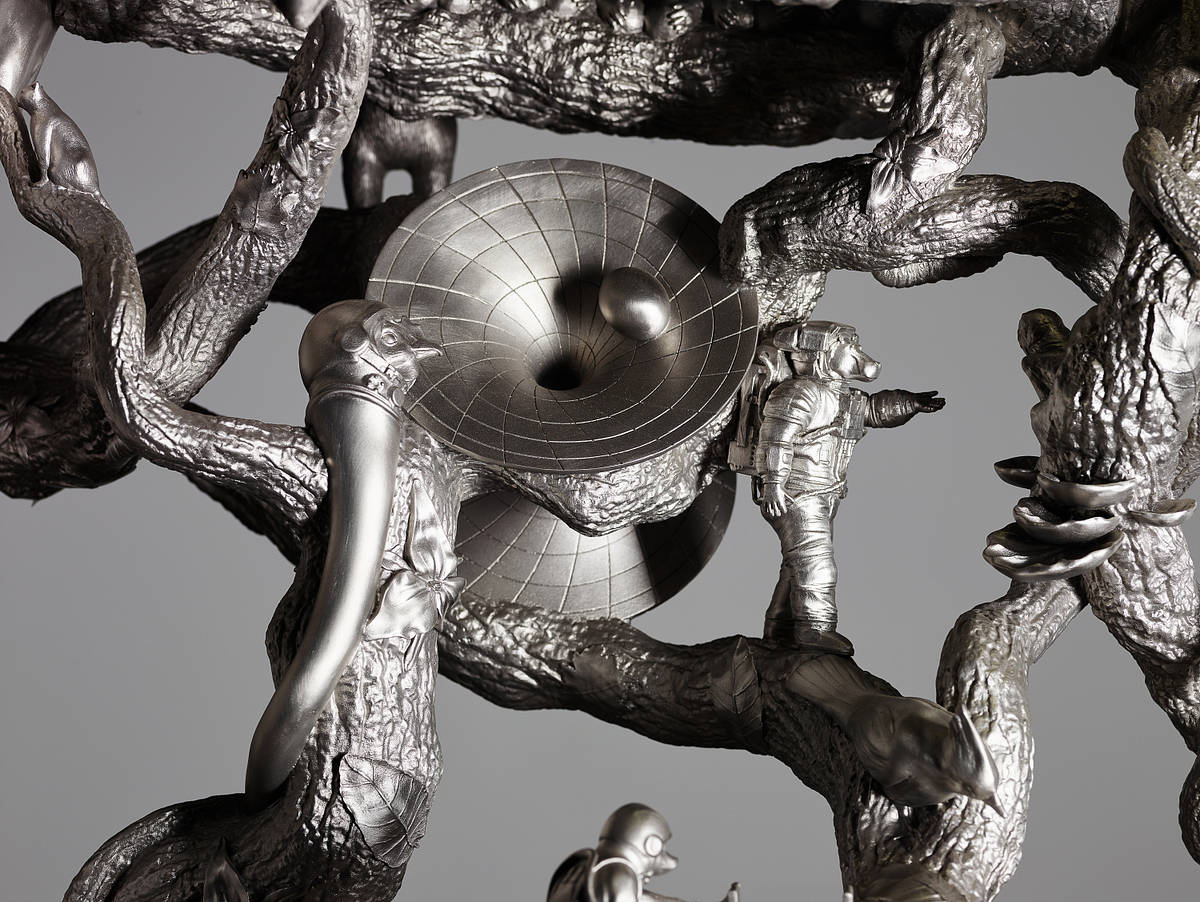
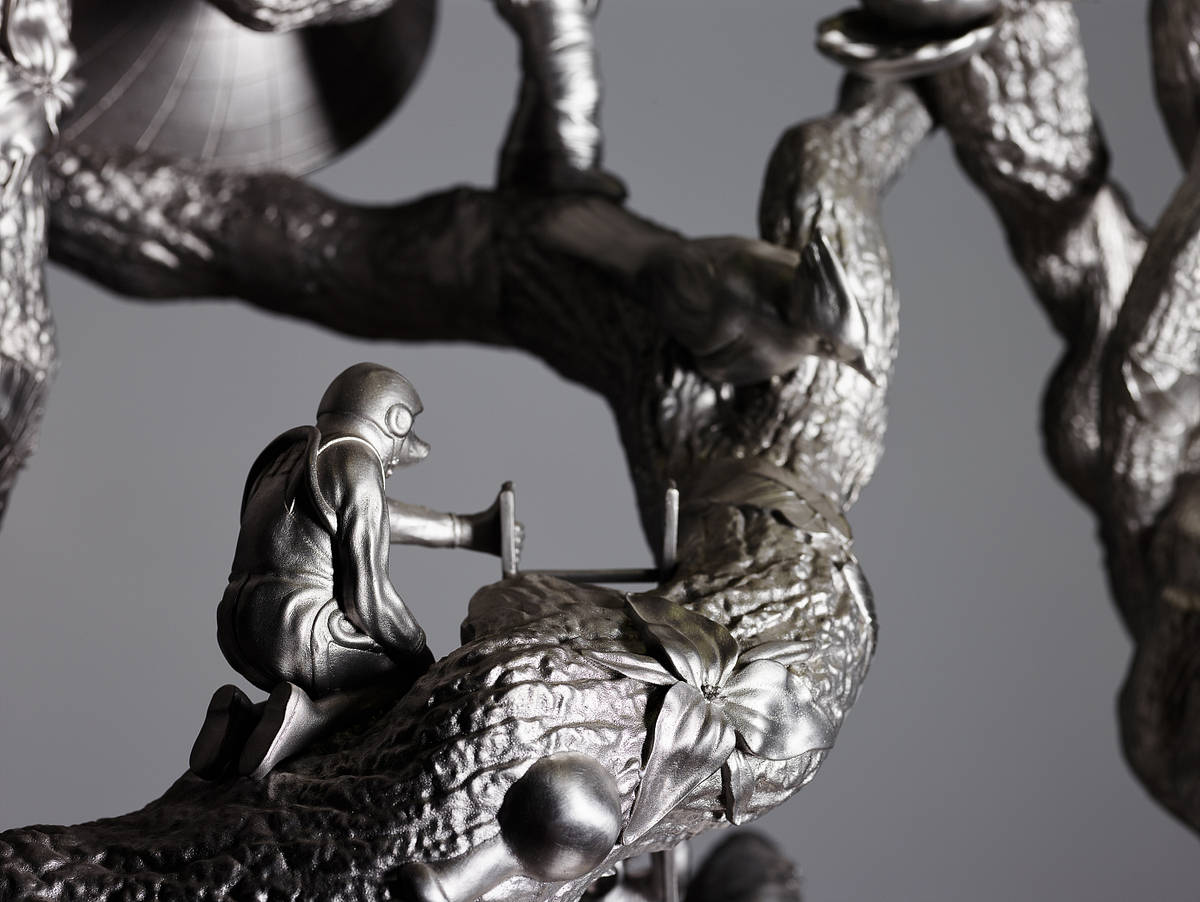
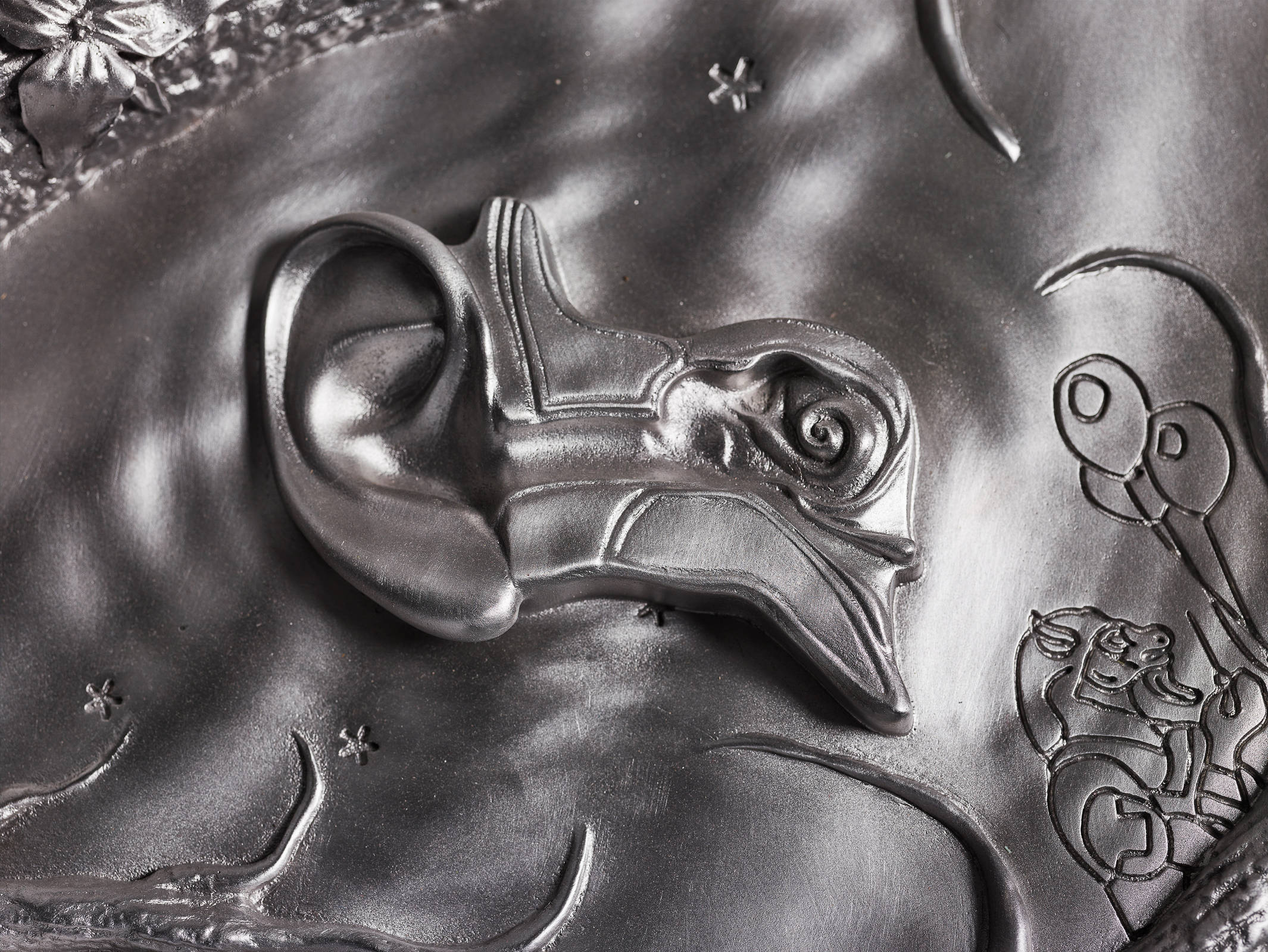
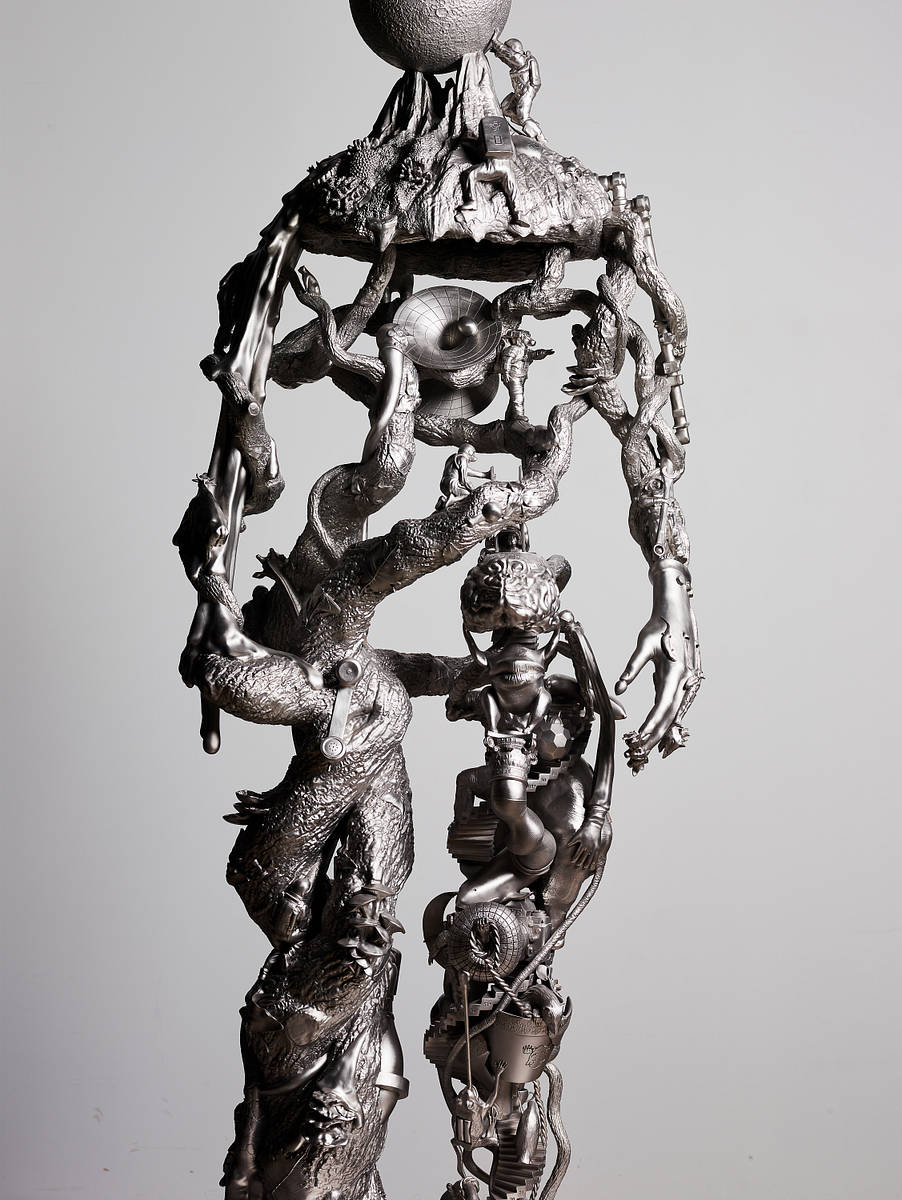
 in Toronto, Ontario](https://d3rdjxriz8paq3.cloudfront.net/media/mediaitem/2833/attachment/medium-280bfcbf903c8f797173eaf835cf2510.jpeg)